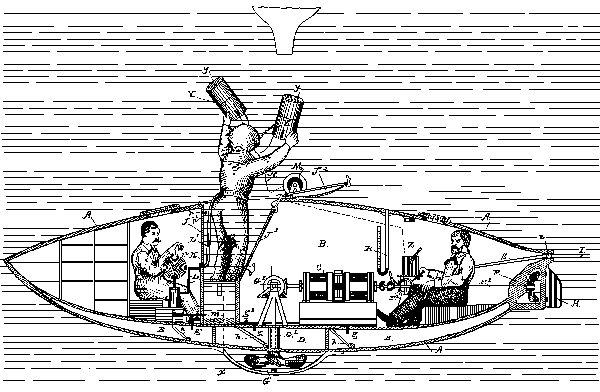

| Length | 30 feet |
| Beam | 7 feet 6 inches |
| Depth | 6 feet |
Professor Joshua Tuck applied for a patent in June 1883 for “certain new and useful improvements in Submarine Boats.” Patent 297,647 was granted April 24, 1884. In this patent, he laid claim to the following ideas:
It was Professor Tuck’s intention to have the captain pilot the vessel while standing half in and half out of the submarine. In that position, he could steer the vessel directly under the enemy vessel and attach a bomb to the keel. During trials in 1884, this system did not work as well as expected and in 1885, the outer hatch was replaced with a dome allowing the captain to pilot the vessel while keeping dry.
Professor Tuck also made a change to the propulsion system. In his patent, he described an electric motor backed up by a hand crank. As built, the submarine used a 14 horsepower Westinghouse steam engine supplied by steam from a Honigman “fireless” natron boiler. With this boiler, Tuck claimed a 1500-pound charge of caustic soda would power the boat for five hours.
Tuck’s Peacemaker submerged by admitting water to ballast compartments and attempted to control her depth using a single propeller on a vertical axis located beneath the vessel. This proved inadequate and the Peacemaker was unable to control her depth.
Ó2000, 2001 Gary McCue
Gary W. McCue
gwmccue@ct.metrocast.net
http://www.geocities.com/gwmccue